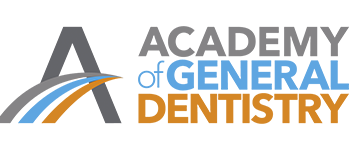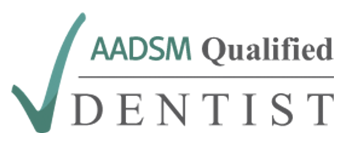“TMJ disorders affect millions—and jaw pain is just the beginning.”
If you’ve been dealing with tightness in your jaw, clicking when you chew, or that deep ache near your ears, it’s not just in your head. It might be your temporomandibular joint, better known as the TMJ. This small but complex joint connects your jaw to your skull—and when it’s not working right, it can make everyday activities uncomfortable.
The good news is there are effective TMJ pain relief techniques that don’t involve surgery or complicated procedures. With the right mix of therapy, awareness, and support, you can ease discomfort and get back to eating, speaking, and smiling comfortably.
What Causes TMJ Pain?
TMJ pain can stem from a few different things. Stress is a big one. When you clench your jaw or grind your teeth (even without realizing it), the pressure on the joint increases. Poor posture, especially when you’re hunched over a screen, can also shift jaw alignment over time. Accidents, uneven bites, arthritis, and jaw tension can all lead to chronic TMJ issues.
Because there’s often more than one cause, managing TMJ pain means looking at the whole picture—your habits, your posture, and your muscle function.
Massage Therapy for TMJ Pain
Let’s start with something simple: massage. When your jaw muscles are tight or overworked, gently massaging them can improve circulation, reduce inflammation, and ease tension.
Using your fingertips, try small circles just in front of your ears and along your jawline. You can also massage the neck and upper shoulders to release connected muscle groups. A warm compress before massaging helps loosen the area. Just be gentle—especially during flare-ups.
Professional massage therapists trained in TMJ treatment can also help you target specific muscles with trigger point therapy or myofascial release. You’ll be surprised how much difference a little focused touch can make.
Physical Therapy and Jaw Exercises
TMJ-focused physical therapy is another highly effective option. It’s about more than just jaw movement. Therapists will often look at your posture, shoulder alignment, and neck mobility to understand the full chain of tension.
Exercises may include controlled jaw movements, resistance training, or stretches designed to restore balance. When you improve jaw mobility and reduce strain, the joint has a better chance to heal.
Working with a physical therapist also gives you tools to use at home. That means you’re not just feeling better during the session—you’re building long-term strength and awareness.
Heat and Cold Therapy
For quick relief, hot and cold packs can be a game-changer. Cold helps reduce inflammation when pain is sharp or swelling is present. Heat helps when the area feels tight or achy.
A simple routine could be 10 minutes of cold followed by 10 minutes of heat. Use a towel to protect your skin, and don’t apply heat or cold directly to the joint for too long. Listen to your body—what feels soothing is usually a good indicator.
Posture Awareness and Ergonomics
Poor posture puts pressure on your jaw without you even realizing it. If you’re looking down at a phone or slouching in front of a screen, your head shifts forward—and your jaw compensates. That extra tension contributes to TMJ discomfort.
Try setting reminders to check your posture throughout the day. Keep your screen at eye level, shoulders relaxed, and chin slightly tucked. Even a simple neck stretch or shoulder roll every hour can help reset your posture and relieve tension.
At night, make sure your pillow supports your neck without pushing your head too far forward. Your sleep posture matters just as much as your daytime habits.
Managing Stress to Reduce Clenching
If you grind or clench your jaw, stress is probably involved. The jaw is one of the first places tension shows up. And when it happens repeatedly, that tension wears down your joint.
Stress management doesn’t have to be complicated. Try deep breathing for two minutes when you feel overwhelmed. Add in a short walk, a stretch break, or a mindfulness app. Reducing mental tension leads to physical relief, especially in the jaw.
Awareness also helps. Throughout the day, check in: Is your jaw relaxed? Are your teeth touching? (They shouldn’t be!) Getting into the habit of checking can stop clenching before it starts.
Myofunctional Therapy and Tongue Posture
This one’s often overlooked—but it’s huge. Myofunctional therapy trains your face, tongue, and breathing muscles to work better together. Why does that matter for TMJ?
Because poor tongue posture, mouth breathing, or incorrect swallowing patterns add stress to the joint over time. Myofunctional therapy strengthens your tongue, encourages nasal breathing, and improves your resting oral posture.
It’s gentle, non-invasive, and only takes a few minutes a day. When paired with other techniques, it supports healing from the inside out.
What About Medications?
For short-term pain, over-the-counter anti-inflammatories like ibuprofen or naproxen can reduce swelling and offer relief. But they don’t fix the root of the problem. They’re best used when symptoms flare up, not as a long-term solution.
Some doctors may prescribe muscle relaxers or medications for nerve-related pain in chronic TMJ cases. If medication is part of your plan, make sure it’s paired with therapies that address the underlying causes.
Avoiding Habits That Make It Worse
Certain habits put unnecessary stress on the jaw. Chewing gum, biting nails, leaning your head on your hand, or chewing tough foods all add up.
During a flare-up, switch to soft foods like oatmeal, soup, and smoothies. Skip the crunchy stuff and give your jaw a break. And if you feel a yawn coming on, try not to open your mouth too wide—support your jaw with your hand if needed.
Being mindful goes a long way. The less pressure you put on your TMJ during the day, the easier it can heal at night.
When to Seek Professional Help
If jaw pain is interfering with your daily life—or if it’s been sticking around for more than a few weeks—it’s time to get it checked. A provider can help rule out other causes, diagnose the severity of your TMJ issue, and recommend a plan that fits your needs.
You don’t have to live with chronic pain or keep guessing what might help. A custom care plan based on your symptoms, habits, and goals can provide real relief.







